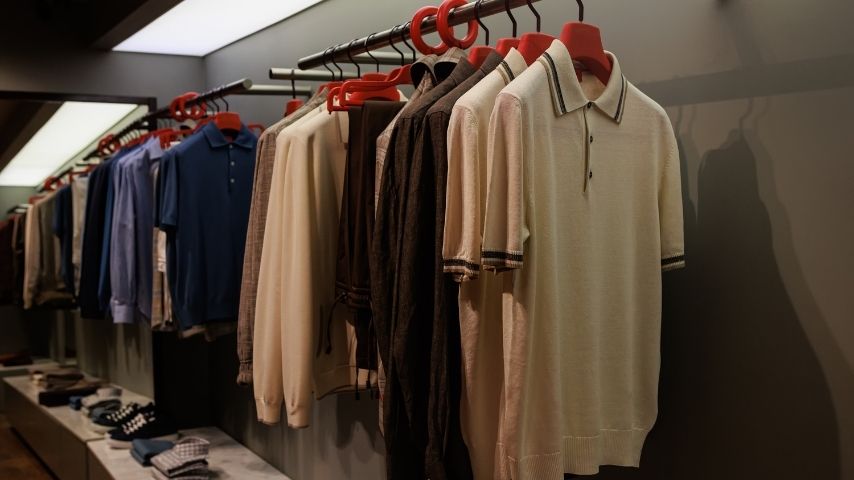Are you an aspiring fashion entrepreneur looking to sell clothes on Etsy? If so, you’ve come to the right place!
With about 89.6 million active buyers on Etsy’s core marketplace as of December 31 2024, the platform remains a highly relevant global marketplace for talented designers and creators to sell their unique clothing. (Etsy, Inc)
However, with so much competition, it can be challenging to make a name for yourself. That’s why we are here to help!
In this article, we will guide you through:
- Essential tips on marketing, promotions and more to help you sell clothes on Etsy
- The step-by-step guide on how to sell clothes on Etsy
Let’s get started!
Haven’t you heard about Etsy dropshipping? Check out The Detailed Guide for Etsy Dropshipping in 2025. This business model can help you avoid the shipping or inventory management when you just start selling clothes on Etsy.
How to Sell Clothes on Etsy
To sell clothes effectively on Etsy, you should focus on these essential steps:
- Step 1: Find Your Niche
- Step 2: Choose the Right Products
- Step 3: Choose How to Produce and Ship Your Products
- Step 4: Create a Professional Shop
- Step 5: Price Smartly
- Step 6: Promote Your Store
1. Find Your Niche
To succeed on Etsy, start by choosing a clear niche that truly reflects your passion and style. Instead of trying to sell all kinds of clothing, focus on a specific category whether it’s handmade linen dresses, vintage denim jackets, or custom embroidered T-shirts. Having a well-defined niche not only helps your shop stand out but also attracts the right buyers who are specifically looking for what you offer.

To get a better sense of what’s trending and how competitive your niche is, use tools like Etsy’s Search Bar, eRank, or Marmalead. Don’t stop there, tools like Google Trends, Semrush, and the Ubersuggest Chrome extension can give you valuable insights into what your target audience loves beyond Etsy. By combining this niche research with real data, you’ll build a solid foundation for your shop and boost your chances of ranking higher on Etsy’s search results.
2. Choose the Right Products
Once you’ve identified your market niche, it’s a good idea to start by choosing the types of clothing you want to sell, maybe a few categories like tops, dresses, or outerwear. Starting small helps you focus and manage your inventory better. As you gather more feedback from customers, you can gradually expand your product range.
- Make sure to prioritize quality and materials that fit your niche, whether that’s organic cotton, recycled fabrics, or unique vintage pieces.
- Keep an eye on seasonal trends by browsing Etsy or Pinterest to see what styles are currently popular.
- Also, take time to read competitor reviews to spot gaps in the market like sizing problems or styles customers feel are missing.
Choosing the right products ensures your store meets both market demand and brand identity, increasing your conversion potential.
3. Choose How to Produce and Ship Your Products
The way you handle production and fulfillment can have a big impact on your profit margins and how quickly your business can grow. Here are the three main approaches to consider:
- Handmade (DIY): Perfect if you want to create unique or custom clothing that truly reflects your brand’s value. The downside is that it takes a lot of time and effort, which can limit your growth unless you bring more people on board or streamline your process.
- Print-on-Demand (POD): Services like Printful or Gelato take care of printing and shipping automatically based on your designs. This approach lowers upfront costs and eliminates inventory risks, making it ideal for graphic tees or branded apparel. Just keep in mind that profit margins tend to be slimmer, and you’ll have less control over quality and shipping times.
- Dropshipping: This means selling fashion items sourced from suppliers without holding any stock yourself. It’s a low-risk way to test new products and trends, but you’ll need to rely heavily on your suppliers to deliver quality items on time.

Choosing the right method depends on your budget, available time, and long-term goals. No matter which option you pick, working with trustworthy suppliers and clearly communicating delivery times is key Etsy buyers really appreciate transparency and on-time shipping.
4. Create a Professional Shop
Selling clothes on Etsy is a great way for you to reach more customers. Follow these simple steps to get started:
Step 1. Create an Etsy account
- Go to the top right corner of the Etsy homepage click Sign In → Register, and confirm your email.
- Log in, click the profile icon, and select Sell on Etsy.
- Click Open Your Etsy Shop to begin.
If you want to sell clothes on Etsy, you will need to create an account first.
Step 2. Set up your shop preferences
Choose your shop language, country, currency, and whether it’s a full-time business. Then click Save and continue.
Step 3. Choose your shop name
Your name should be simple, unique, and up to 20 characters (letters and numbers only, no spaces or accents).
Enter the name → Check availability → Click Save and continue.
Step 4. Set up payment methods
- If available, choose Etsy Payments for more payment options and easier financial management.
- If your country is not eligible, use PayPal instead.
Step 5. Create your product listings
Aim for at least 10 listings. Each listing should include:
- Up to 10 photos, plus an optional video
- Title, description, tags
- Price
- Variations and personalization (if any)
- Shipping details
- Preview each listing, then click Save and continue to finish.
5. Price Smartly

Take time to research similar products within your niche to get a good sense of the market price but don’t underestimate the value of your own creations. Consider all your costs, including materials, production time, shipping, and Etsy fees, before setting a fair profit margin. If your items are handmade or custom made, highlight the craftsmanship involved to help justify a higher price. You might also try running promotions like bundle deals or limited-time offers to boost your sales.
6. Promote Your Store
Combine Etsy SEO with external promotion to maximize your shop’s reach. While Etsy SEO is essential, it’s not enough on its own. Use platforms like Instagram, Pinterest, and TikTok to share styling tips, behind-the-scenes moments, and customer stories that help build your brand and attract a wider audience.
Collaborate with micro influencers in fashion or sustainability niches to connect with targeted audiences and boost your shop’s visibility.
To get early exposure for your best products, consider running Etsy Ads. Start with a small budget, monitor the results closely, and optimize your listings based on performance.
Focus on building customer retention by growing an email list and offering loyalty programs or perks that encourage repeat purchases and strengthen relationships.
By combining SEO, external promotion, and retention strategies, you’ll create a solid foundation for steady, sustainable growth for your Etsy shop.
5 Tips to Sell Clothes on Etsy
1. Showcase Clothes Using Real Models
You can use real models to display your products in your shop. This method helps customers visualize how the clothes will look when worn. To help customers choose the right size, make sure to clearly state the model’s measurements and the size they are wearing.
2. Provide Clear and Attractive Product Descriptions
In addition to investing in quality product images, it is important to focus on writing detailed and clear product descriptions. Since your sales happen online, customers need comprehensive information along with photos from various angles to select the right size, style, and color.
3. Build a Consistent and Engaging Shop Experience
You should strive to create an Etsy shop that offers a distinctive and consistent style by maintaining uniformity in colors, logos, and communication tone. A professional and cohesive shop appearance will encourage customers to feel confident and comfortable when shopping.
4. Use Smart Promotions to Boost Sales
Discount programs, bundle deals, and limited-time promotions can effectively attract customers and increase sales. Don’t hesitate to try different promotional strategies to find what works best for your shop.
5. Target a Global Customer Base
Since Etsy operates globally, it is important to prepare your shop to serve customers from different countries. Converting sizes and currencies to international standards will make purchasing easier for international buyers. Additionally, offering transparent and reliable international shipping is crucial for expanding your market.
Want to make money with Etsy, you might want to check out: Mastering the Etsy Affiliate Program: A Step-by-Step Guide
Sell Clothes on Etsy – FAQs
- Is Etsy good for selling clothes?
Yes, it is absolutely GOOD!
If you’re looking forward to selling used clothes on Etsy, you should try it. Remember that to list your clothes on Etsy, they need to be at least 20 years old and not in the handmade section. With those requirements met, you can use the platform to showcase and sell clothes on Etsy.
- How much does it cost to sell clothes on Etsy?
If you sell clothes on Etsy, there are some fees involved you need to keep an eye on. You’ll need to pay a listing fee of $0.20 for each listed item and a transaction fee of 6.5% for every sale.
Besides, the listing will remain active for four months or until sold. Once your item sells, the 6.5% transaction fee, including shipping, will be applied to the total sale cost.
- Do I need a license to sell on Etsy?
No, you DON’T!
Sellers can start selling on Etsy without having a business license. But depending on your location, you may need to obtain licenses and permits at the state, county, or local municipality level to legally operate your business.
Final Thoughts
Great job! You’ve successfully gone through our article filled with top tips on how to sell clothes on Etsy. With these tips, you can now confidently open your own Etsy shop, create product listings, optimize your listings with keywords and tags, and provide excellent customer service to your buyers.
If you have any questions or need more help, please don’t hesitate to contact us or check out our Retail Blog for helpful tips and insights. Don’t forget to join our Facebook community to connect with other sellers and share your success stories. Thank you for reading. We wish you all the best in your Etsy journey!



